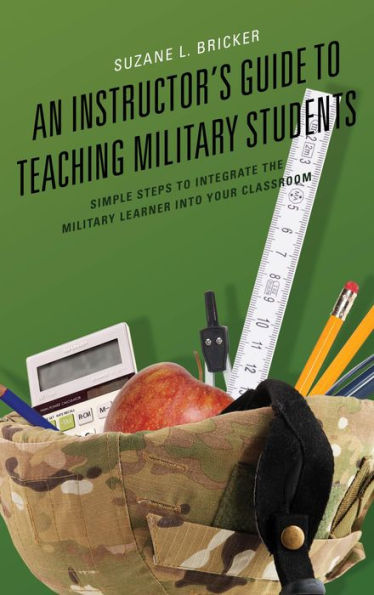An Instructor's Guide to Teaching Military Students: Simple Steps to Integrate the Military Learner into Your Classroom
An Instructor’s Guide to Teaching Military Students is a resource for online and on-ground educators in private and public learning institutions around the world. The content applies to faculty members in liberal arts and research-oriented institutions, and vocational trainers. Topics are related to the creation of lecture material and delivery of course content in computer and information science, engineering, and engineering technology, healthcare, business and finance, marketing communications and general education courses in the arts and social sciences. Suggestions on providing feedback that is sensitive to the unique culture and experiences of military students are provided as well. The last chapter includes the opinions of academic and military experts on what progress has been made in meeting the needs of this particular student population, as well as predictions about future changes that will facilitate the transition from service member to scholar.
The term, “military learners” has been adapted for this text to include active-duty service members and their families, veterans, members of the U.S. National Guard, and reservists, as well as U.S. Department of Defense (DOD) contractors. Language used that can be easily understood and applied by the novice instructor, or the seasoned professional. This handbook also provides useful suggestions on helping students translate their military training and experience into more active classroom participation.
1126002472
The term, “military learners” has been adapted for this text to include active-duty service members and their families, veterans, members of the U.S. National Guard, and reservists, as well as U.S. Department of Defense (DOD) contractors. Language used that can be easily understood and applied by the novice instructor, or the seasoned professional. This handbook also provides useful suggestions on helping students translate their military training and experience into more active classroom participation.
An Instructor's Guide to Teaching Military Students: Simple Steps to Integrate the Military Learner into Your Classroom
An Instructor’s Guide to Teaching Military Students is a resource for online and on-ground educators in private and public learning institutions around the world. The content applies to faculty members in liberal arts and research-oriented institutions, and vocational trainers. Topics are related to the creation of lecture material and delivery of course content in computer and information science, engineering, and engineering technology, healthcare, business and finance, marketing communications and general education courses in the arts and social sciences. Suggestions on providing feedback that is sensitive to the unique culture and experiences of military students are provided as well. The last chapter includes the opinions of academic and military experts on what progress has been made in meeting the needs of this particular student population, as well as predictions about future changes that will facilitate the transition from service member to scholar.
The term, “military learners” has been adapted for this text to include active-duty service members and their families, veterans, members of the U.S. National Guard, and reservists, as well as U.S. Department of Defense (DOD) contractors. Language used that can be easily understood and applied by the novice instructor, or the seasoned professional. This handbook also provides useful suggestions on helping students translate their military training and experience into more active classroom participation.
The term, “military learners” has been adapted for this text to include active-duty service members and their families, veterans, members of the U.S. National Guard, and reservists, as well as U.S. Department of Defense (DOD) contractors. Language used that can be easily understood and applied by the novice instructor, or the seasoned professional. This handbook also provides useful suggestions on helping students translate their military training and experience into more active classroom participation.
23.5
In Stock
5
1

An Instructor's Guide to Teaching Military Students: Simple Steps to Integrate the Military Learner into Your Classroom
172
An Instructor's Guide to Teaching Military Students: Simple Steps to Integrate the Military Learner into Your Classroom
172
23.5
In Stock

Product Details
| ISBN-13: | 9781475828450 |
|---|---|
| Publisher: | Rowman & Littlefield Publishers, Inc. |
| Publication date: | 11/08/2017 |
| Sold by: | Barnes & Noble |
| Format: | eBook |
| Pages: | 172 |
| File size: | 6 MB |
About the Author
From the B&N Reads Blog
